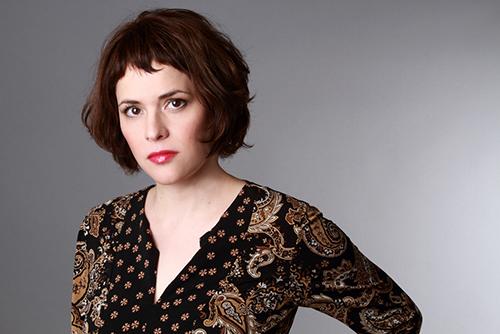Unwelcome Visitations: On Writing ‘Dead Girl Gang Bang’

[Note: Each month we feature a guest post from a contributor to Poetry’s current issue. Cate Marvin’s “Dead Girl Gang Bang” appears in the February 2015 issue. Previous posts in this series can be found on the Editors’ Blog.]
“Dead Girl Gang Bang” is the culminating poem in a series of “high school” poems that provide a shadow narrative for the many obsessions visited by the speaker of my third book, Oracle.
I conceived of the initiating poem, “High School in Suzhou,” while squatting inside a bathroom stall in a girls’ room at one of the many high schools I visited in 2007 while on a “scholars’ tour” of China.
I could not conceive of the fact that I entered into these buildings, in my adult life, in the role of “academic” as anything but ironic. As a high school student in the eighties, I spent much of my time hiding in the girls’ room, cutting class, poking my head out every so often in hopes I might manage to escape the hall monitor’s attention so as to leave the building without getting caught.
And so there was something about the dankness of that bathroom, the narrowness of the stall I’d locked myself into, that suddenly hit me as representative of one of the more sorrowful aspects of the human condition. In that moment, in a country as distant and strange to me as China, I could feel the moving minds of all the girls, the thousands of them, who had previously squatted in that very stall.
This epiphany required no great stretch of the imagination, and yet it startled me. Have we not, all of us, been forced to endure the experience of high school? What would happen, I wondered, if one positioned “high school” as a metaphoric location, an idea even, for the psychic inscape of adolescence?
One of the first figures to make an appearance in the “high school poems” was the Dead Girl.
I should not have been surprised. In 2005, I’d received, seemingly out of nowhere, an ominous phone call from a high school friend who stated at the onset, I thought you should know . . . which was when I learned that my best friend from high school had already been dead for four years. She was only thirty when she shot herself in the head.
I’d not spoken to her since 1988, the year we graduated. Oh, I saw her, once, a year or two later, in the checkout line at People’s Drug Store while home during a holiday, but I hid in the magazine aisle so as to avoid her. We’d had a falling out years before, due to a rather spectacular series of personal betrayals of the variety necessitated by the act of growing up.
During the summer in which I completed Oracle, a friend spoke to me fiercely about the significance of this figure to the arc of the book, insisting that the Dead Girl needed to make a final appearance.
This was a girl I’d loved greatly. She and I used to trudge up Tuckerman Lane together (we were too young to drive) in Potomac, MD, to arrive at Cabin John Shopping Center, where we’d convince various shady characters we’d met in the parking lot to walk into the liquor store with our wadded-up bills and re-emerge with jugs of cheap wine we’d then carry home in our backpacks.
She alone ushered me into the world of teenage girlhood. Ours was a dangerous boredom. Were it not for her very appealing tendency to lure me into a number of lurid scenarios that would keep any parent awake at night, I might have spent the rest of high school inside, reading. What I am trying to say is that she propped a door open to Life, through which I gratefully passed.
And even though I’d not spoken to her for seventeen years, and although I regarded her influence somewhat warily, her death began to uncoil within me, growing more and more impossible to disregard. There was the fact that I missed her. There was the realization it could have just as likely been me.
And was it the presence of the Dead Girl I felt when I squinted my eyes at the screen on which the image of my unborn child was presented during an amniocentesis? The nurse looked over and casually announced, “I think it’s a girl.”
A wave of horror passed over me. This would not do! I’d somehow convinced myself I was having a son. On telling people about my initial response, I’m often met with confusion. But it was a very simple reaction. I couldn’t bear the thought that my child would be in any way likely to experience even the most basic initiations I had myself been subjected to as a teenage girl.
When writing the final poem that would eventually become “Dead Girl Gang Bang,” I sat on my couch night after night, shuffling through memories that seemed bland enough in recollection. Then I recognized a particular memory I’d internalized to the extent that I had not allowed myself to see it for what it was. Was it just one of those things that happens to curious girls? Girls who, they say, should know better?
Anyone familiar with fairy tales knows it’s the curious girls who meet the ugliest ends. Their shared fate seems predetermined, a most certain punishment that could have easily been avoided if they’d simply done as they were told.
Last night, on sitting down to write this, I heard my daughter, now six, crying in her room. She is afraid of monsters. I tell her that monsters do not exist. I am lying.
Cate Marvin was raised in Washington, DC and earned an MFA in poetry from the University of Houston,...
Read Full Biography

